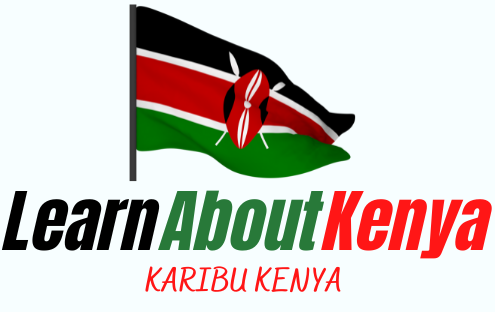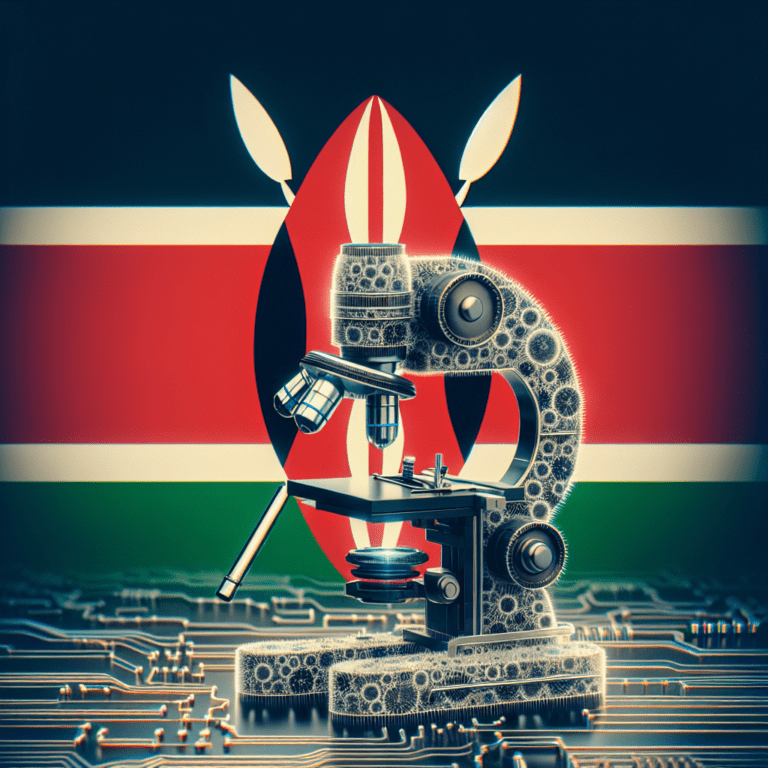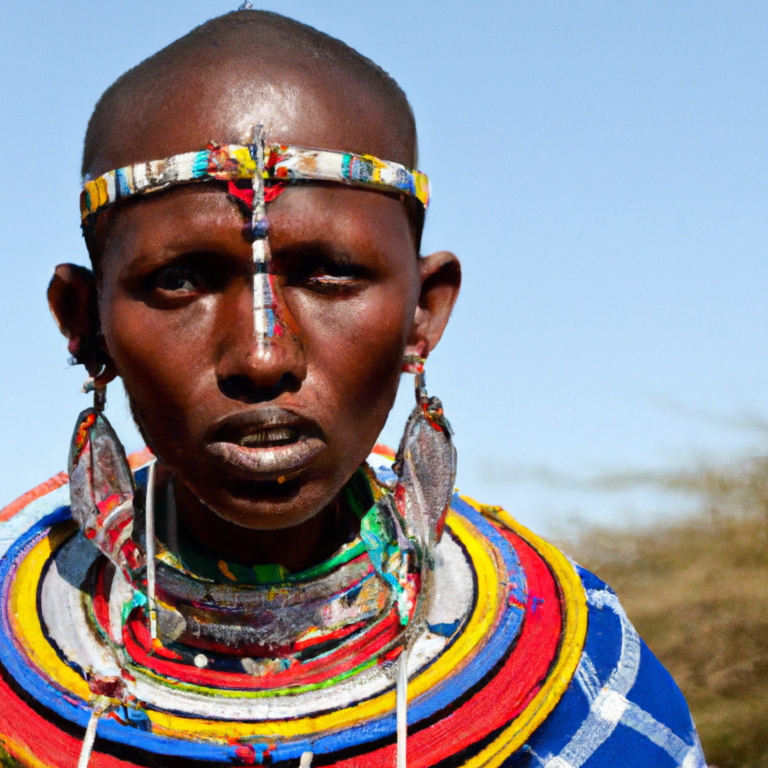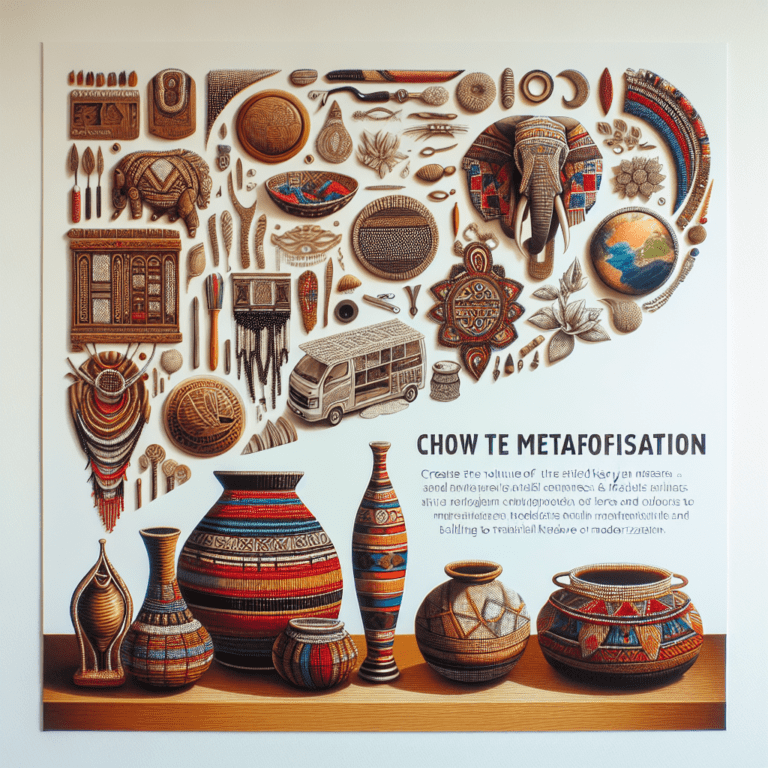How Did The Colonization Impact The Indigenous Population?
Imagine a world where your way of life is suddenly disrupted, your cultural practices eroded, and your entire existence altered. This is the harsh reality that befell the indigenous populations across the globe when colonization occurred. The impact of colonization on these communities was profound and far-reaching, leaving a lasting legacy that continues to shape their lives to this day. In this article, we will explore the various ways in which colonization impacted the indigenous population, enlightening us on the challenges they faced and the resilience they displayed in the face of adversity.
Loss of Land and Resources
Forced displacement
During colonization, indigenous populations often experienced forced displacement from their ancestral lands. European colonizers would forcefully relocate indigenous communities in order to gain control over their territories. This displacement had devastating effects on the indigenous population, as it disrupted their way of life and severed their connection to the land that held cultural, spiritual, and economic significance.
Land confiscation
With colonization came the confiscation of indigenous lands by the colonizers. Indigenous people were dispossessed of their territories, which were then claimed and exploited for economic purposes by the colonizers. This land confiscation not only stripped indigenous communities of their ancestral lands but also impacted their ability to engage in traditional practices such as agriculture, hunting, and gathering.
Loss of hunting and farming grounds
The loss of land due to colonization also resulted in the loss of hunting and farming grounds for indigenous communities. These lands were not only crucial for their sustenance but also played a fundamental role in their cultural identity. The disruption of hunting and farming practices had profound impacts on the indigenous population’s ability to maintain their traditional way of life and their self-sufficiency.
Depletion of natural resources
As colonizers exploited the resources found on indigenous lands for their economic gain, natural resources were rapidly depleted. Forests were clear-cut, rivers were polluted, and ecosystems were disrupted. This depletion of natural resources deprived indigenous communities of their livelihoods and had long-lasting ecological consequences on the environment. It further exacerbated the challenges faced by indigenous populations in their struggle for survival.
Disease and Epidemics
Introduction of new diseases
Colonization brought the devastating introduction of new diseases to indigenous populations. European colonizers, who had developed immunities to diseases through centuries of exposure, unintentionally exposed indigenous communities to illnesses for which they had no immunity. Diseases such as smallpox, measles, and influenza ravaged indigenous populations, causing immense suffering and a staggering loss of life.
Lack of immunity
Indigenous communities had not built up immunity to these new diseases, making them particularly vulnerable. The lack of immunity among the indigenous population resulted in higher mortality rates and the decimation of entire communities. The introduction of new diseases had a profound impact on the overall demographic landscape and cultural fabric of indigenous societies.
High mortality rates
The combination of new diseases and the lack of immunity resulted in alarmingly high mortality rates among indigenous populations. Diseases that were formerly unknown to indigenous communities caused widespread death and suffering. The loss of lives, including knowledge keepers and elders, had a devastating impact on indigenous cultures, as it led to the erosion of traditional knowledge, practices, and cultural continuity.
Loss of traditional knowledge
The devastating impact of diseases brought by colonization extended beyond immediate death tolls. The loss of lives also meant the loss of traditional knowledge that was passed down for generations. Indigenous communities suffered the loss of vital cultural practices, medicinal knowledge, and spiritual beliefs. The erasure of traditional knowledge disrupted the intergenerational transmission of cultural heritage and significantly impacted the social fabric of indigenous societies.
Violence and Conflicts
Forced labor and slavery
Colonization often entailed the imposition of forced labor and slavery upon indigenous populations. Indigenous people were exploited for their labor and forced into grueling work conditions on plantations, mines, and other industries. This practice not only robbed indigenous individuals of their freedom but also subjected them to extreme physical and psychological hardships, perpetuating a cycle of violence and oppression.
Massacres and genocides
The colonial period witnessed numerous massacres and acts of genocide committed against indigenous populations. As colonizers sought to assert their control and dominance, they employed brutal strategies to eliminate or subjugate indigenous communities. These acts of violence aimed to weaken resistance movements and erase indigenous presence from significant regions, resulting in the loss of countless lives and cultural heritage.
Loss of cultural heritage
The violence inflicted upon indigenous populations during colonization had a profound impact on their cultural heritage. Massacres and genocides led to the destruction of traditional cultural practices, knowledge systems, and artifacts. Valuable aspects of indigenous cultural heritage were lost forever due to the intentional suppression and eradication of indigenous cultures by colonizers.
Resistance movements
Despite the challenges they faced, indigenous communities throughout history have shown remarkable resilience and strength by organizing resistance movements against colonial powers. These movements aimed to protect indigenous rights, reclaim autonomy, and resist cultural assimilation. The endeavors of these resistance movements have contributed to the preservation of indigenous cultures, sparked social awareness, and paved the way for indigenous rights movements that continue to this day.
Loss of Autonomy and Sovereignty
Imposition of colonial rule
With colonization came the imposition of colonial rule on indigenous populations. European powers sought to establish political control, often through violent means, which severely weakened indigenous sovereignty and self-governance. Indigenous communities were subjected to external governing structures that disregarded their unique social, political, and cultural systems.
Erosion of indigenous governance
Colonization resulted in the erosion of indigenous governance structures. Traditional forms of governance were marginalized, suppressed, or completely dismantled by colonial authorities. Indigenous systems of decision-making and self-governance, deeply rooted in the land and community values, were replaced with foreign systems that did not align with indigenous perspectives or respect their autonomy.
Assimilation policies
Assimilation policies were commonly imposed upon indigenous populations by colonial powers. These policies aimed to eradicate indigenous cultures and force indigenous individuals to adopt European customs, languages, and belief systems. Indigenous children were often forcibly removed from their families and communities, placed in boarding schools, where they were subjected to intense assimilation efforts that aimed to erase their indigenous identities.
Loss of political power
Under colonial rule, indigenous populations experienced a significant loss of political power. Their voices and agency were intentionally marginalized or ignored by colonial authorities. Indigenous people were disenfranchised and excluded from political decision-making processes, leading to a loss of autonomy, diminished representation, and the perpetuation of socio-political disparities.
Social and Cultural Disruption
Forced assimilation
Forced assimilation was a fundamental aspect of colonial strategies, intended to erase indigenous cultures and replace them with European norms. Indigenous individuals were coerced into abandoning their languages, traditions, and practices, often facing severe punishment if they resisted. This assimilation policy disrupted social cohesion and identity formation within indigenous communities.
Loss of language and cultural practices
The loss of language is an integral aspect of colonization’s impact on indigenous populations. Many indigenous languages were suppressed, forbidden, or lost altogether due to assimilation policies. As languages vanished, so did the transmission of cultural values, traditions, and interpersonal relationships. The loss of cultural practices widened the divide between generations and weakened the cultural integrity of indigenous societies.
Conversion to Christianity
Colonial powers often imposed Christianity on indigenous populations, considering it an essential element of civilization and control. Forced conversions further disrupted indigenous spiritual and belief systems, creating tension between indigenous traditions and the new religious framework. The adoption of Christianity often resulted in the loss of indigenous spiritual practices and weakened cultural identities.
Breakdown of traditional social structures
Colonization dismantled traditional social structures within indigenous communities. The imposition of external governing systems, forced assimilation, and economic exploitation disrupted long-established social hierarchies, kinship systems, and community connections. Traditional roles and responsibilities were undermined, leading to social disintegration and the erosion of community resilience.
Economic Exploitation
Exploitative labor practices
Colonizers often exploited the indigenous population through various labor practices. Indigenous individuals were subjected to exploitative working conditions, such as forced labor, low wages, and long hours. These practices perpetuated economic dependency, poverty, and the further marginalization of indigenous communities.
Resource extraction and trade
Colonial powers exploited indigenous lands and resources for their economic benefit. Timber, minerals, and other valuable resources were extracted and traded without considering the long-term consequences for the indigenous populations who depended on these resources for survival. Indigenous communities were dispossessed of their own resources while being excluded from the economic benefits generated by their exploitation.
Unfair trade agreements
Colonial powers imposed unfair trade agreements upon indigenous populations, exploiting their economic vulnerabilities. Indigenous communities were often coerced into unfair trade relationships that heavily favored the colonizers. These agreements further perpetuated economic inequality and disempowered indigenous economies, leaving them at a significant disadvantage in the global economic system.
Dependence on colonial powers
Colonization resulted in the dependence of indigenous populations on colonial powers for economic survival. Indigenous communities, whose self-sufficiency was disrupted by land confiscation and resource depletion, became reliant on colonial powers for basic necessities. This economic dependency further reinforced the power dynamics between colonizers and indigenous populations, perpetuating inequalities and limiting indigenous autonomy.
Education and Cultural Reformation
Introduction of Western education
Colonial powers established Western educational systems within indigenous territories to propagate their ideologies and values. These systems were designed to assimilate indigenous individuals into European culture and eradicate indigenous knowledge systems. Indigenous children were often forced to abandon their own languages, traditions, and ways of knowing, leading to a significant loss of cultural identity.
Suppression of indigenous knowledge
Colonizers actively suppressed indigenous knowledge systems as part of their colonial strategies. Indigenous ways of knowing, which encompassed traditional ecological knowledge, medicinal practices, spiritual beliefs, and cultural wisdom, were deemed inferior or irrelevant. The suppression of indigenous knowledge perpetuated the erasure of indigenous cultures and disrupted the transmission of traditional knowledge to future generations.
Acculturation and assimilation
Colonization sought to acculturate and assimilate indigenous populations into European societies. Indigenous individuals were pressured to adopt European norms and values, forsaking their own cultural identities. This process of acculturation and assimilation placed severe strain on indigenous communities, as they grappled with the cultural dissonance between their heritage and the expectations of the dominant colonizing society.
Revitalization movements
In response to the erosion of their cultural heritage, indigenous communities have initiated revitalization movements to reclaim their languages, traditions, and cultural practices. These movements aim to restore and preserve indigenous knowledge, revitalize cultural practices, and affirm indigenous identities. Through cultural revitalization efforts, indigenous populations are reclaiming their voice, building resilience, and challenging the colonial narrative that has imposed upon them for centuries.
Population Decline and Displacement
Decreased birth rates
Colonization often resulted in decreased birth rates among indigenous populations. The introduction of new diseases, violence, forced displacement, and social disruption caused immense stress and health challenges that impacted reproductive health. The decline in birth rates weakened indigenous populations and hindered their ability to maintain cultural continuity through the generations.
High mortality rates
As discussed earlier, the introduction of new diseases and violence associated with colonization led to alarmingly high mortality rates among indigenous populations. The loss of lives, particularly among women and children, contributed to a decline in population size and severely disrupted the demographic balance within indigenous communities.
Displacement to reservations
In many cases, indigenous populations were forcibly relocated to designated reservations, often marginal and undesirable lands. These forced relocations disrupted indigenous social and cultural systems, isolating communities from their traditional territories and resources. The confinement to reservations further eroded autonomy and perpetuated economic disparities within indigenous populations.
Loss of population diversity
Colonization also led to a loss of population diversity among indigenous communities. Forced displacement, violence, and diseases resulted in the decimation of entire indigenous groups. The loss of these distinct cultures and languages not only represented an irreparable loss of human diversity but also weakened the resilience and rich tapestry of indigenous societies.
Land and Resource Rights
Expropriation of indigenous lands
Colonizers frequently expropriated indigenous lands for their own use and economic gain. Indigenous communities were dispossessed of their ancestral territories, often without consent or fair compensation. This expropriation further marginalized indigenous populations, severed their connection to the land, and infringed upon their inherent right to self-determination.
Restrictions on resource access
Indigenous populations experienced restrictions and barriers in accessing and utilizing their traditional resources. The colonizers imposed laws and policies that limited indigenous hunting, fishing, and gathering practices and prioritized the exploitation of these resources for colonial economies. These restrictions not only impoverished indigenous communities but also contributed to the loss of traditional land management practices that were crucial for sustainable resource use.
Loss of traditional land management practices
Colonization disrupted the traditional land management practices of indigenous communities. Indigenous peoples had developed sustainable land management systems that enabled them to thrive in harmony with the environment for centuries. However, colonization’s impact disrupted these practices, dismantled indigenous systems of ecological knowledge, and replaced them with exploitative models that prioritized profit over sustainability.
Struggles for land and resource rights
Throughout history, indigenous communities have engaged in struggles for land and resource rights to reclaim their territories and assert their sovereignty. These struggles have taken the form of legal battles, protests, and activism to protect indigenous lands and resources from further exploitation. The fight for land and resource rights remains a critical issue for many indigenous populations around the world.
Legacy and Contemporary Issues
Intergenerational trauma
The profound and enduring impacts of colonization have resulted in intergenerational trauma among indigenous communities. The violence, forced assimilation, loss of land, and cultural disruption have left deep scars that are passed down through generations. Intergenerational trauma manifests in psychological, social, and health issues, perpetuating a cycle of adversity and impacting the overall well-being of indigenous populations.
Marginalization and discrimination
Colonization continues to marginalize and discriminate against indigenous populations. The socio-economic disparities, limited access to education and healthcare, and ongoing systemic racism contribute to the marginalization experienced by indigenous communities. Discrimination and stereotypes perpetuate social divides, hindering the full realization of indigenous rights and perpetuating social injustice.
Efforts for reconciliation
Efforts for reconciliation between indigenous populations and the colonizers have been ongoing in many parts of the world. Reconciliation aims to acknowledge the injustices, address historical trauma, and foster healing and understanding. These efforts often involve truth and reconciliation commissions, land restitution, and the promotion of indigenous rights and autonomy.
Socio-economic disparities
Colonization has left a legacy of socio-economic disparities that persist to this day. Indigenous populations often face higher poverty rates, limited access to quality healthcare and education, and reduced economic opportunities compared to the non-indigenous population. These disparities perpetuate cycles of inequality, hinder social mobility, and pose significant challenges for the overall development and well-being of indigenous communities.
In conclusion, the impact of colonization on indigenous populations has been profound and far-reaching. From the loss of land and resources to the introduction of new diseases, violence and conflicts, loss of autonomy and cultural disruption, economic exploitation, educational and cultural reformation, population decline and displacement, struggles for land and resource rights, and the enduring legacy of colonialism, indigenous communities have faced tremendous adversity. However, despite these challenges, indigenous populations have demonstrated resilience, resistance, and efforts towards reconciliation, all in pursuit of a more just and inclusive world. It is crucial to recognize and address the historical injustices and ongoing disparities faced by indigenous populations and work towards true equality and respect for their rights and cultures.







